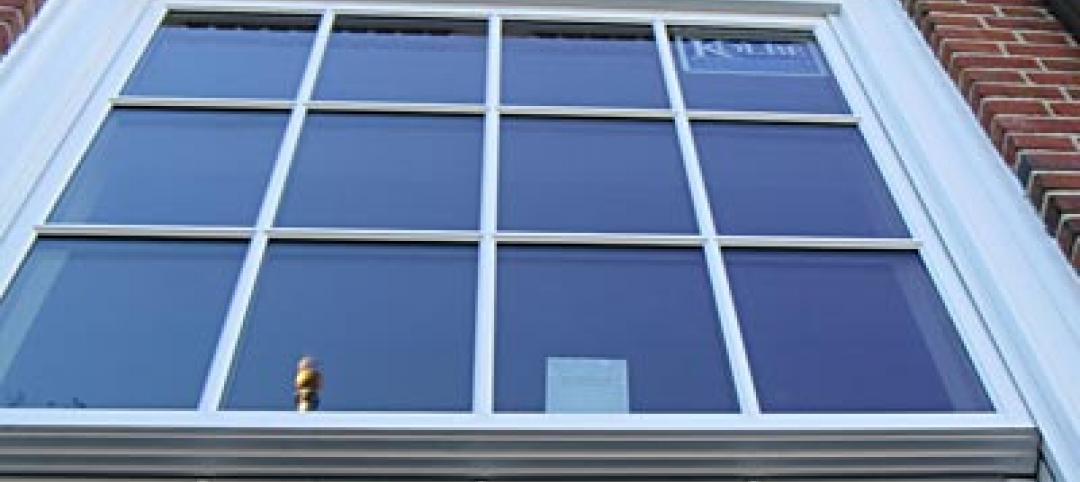In the rapidly changing world of virtual design and construction, the mechanical-electrical-plumbing component of building information modeling has earned a reputation as something of a technology laggard. BIM for structural work? Beautiful. For architectural design? Lovely. For general construction? Terrif’. But BIM for MEP? Not so hot.
That negative perception is changing, as MEP engineers find new ways to put BIM to more effective use in their work—which, in the case of a complex project like a hospital, can account for 30-40% of total construction costs.
Southland Industries, Garden Grove, Calif., is one such innovator. The design-build mechanical contractor is applying electronic surveying technology to BIM and 3D models to enhance the accuracy and reliability of prefabricated HVAC and plumbing systems. In so doing, it is saving time and money on complex hospital projects while improving quality.
Forging a unified Building Team
Three years ago, a major client commissioned Southland and its partners to design-build a complex of three facilities totaling more than a half-million square feet—a multi-story patient tower with a diagnostic/treatment center, a health services building, and a central utility plant.
The Building Team—which in addition to Southland included HMC Architects (architect), Ted Jacob Engineering Group (M/E OR and electrical COR), Sasco Electric (design-assist electrical contractor), Berger Bros. (exterior framing), Sharpe Interior Systems (interior framing), and McCarthy Building Cos. (GC)—had worked together successfully on a previous job for this healthcare provider. The client wanted to keep the same team and bring them together early in the design process, a practice that had not been followed in the earlier project.
Southland’s role was to provide design-assist mechanical/plumbing services. According to Patrick Reed, Contract Executive in the firm’s healthcare division, the company grasped the opportunity to make better use of the available BIM/3D documents to improve its prefabrication of mechanical and plumbing systems.
Southland had been prefabbing piping and sheet metal in its 80,000-sf shop in Garden Grove, Calif., for decades. For the new project, Reed and his team planned to apply electronic surveying technology normally used for exterior applications—in this case, Trimble Total Station RTS-555, with AutoCAD CADMEP+ solution software—to the BIM models of the interior HVAC and plumbing systems.
“Our Northern California office had used a system like this in previous projects,” says Reed. For the new project, the goal was to take the data from the BIM model and prefab the mechanical and plumbing systems in whole assemblies—for 100% of the job.
“You can run into problems because the documents don’t match what’s out in the field,” says Reed. The surveying system would, it was hoped, provide the accuracy needed to make sure all the prefabbed pieces fit together perfectly at the site.
Dialing down the tolerances
Linking the interior survey to the BIM model proved an enormous time saver for prefabbing and installing such components as piping insert hangers, seismic inserts, and sleeves. “We had not preassembled our hangers before,” says Reed. Instead, hangers would be delivered to the field and cut on site. “The Trimble system allowed us to set a zero point on the metal deck so that we could prefab hangers to a half-inch accuracy in height,” he says.
The system also provided a level of accuracy of plus or minus one-eighth of an inch, versus a quarter-inch industry standard. “We had a reproducibility that allowed us to use 98-99% of the inserts and prefabricated hangers, compared to about 85% in previous jobs,” says Reed. “Three-D coordination allowed that level of reproducibility.”
Plumbing and pipefitting installation was vastly improved. Instead of having crews of five or six using string and tape to measure and lay out mechanical system inserts, Southland was able to use two-person crews to do the same job more accurately, using the electronic survey equipment. “It took about two weeks of training to learn how to use the device and the methodology,” recalls Reed. “After becoming proficient with the device, their productivity excelled.”
That training paid off in a 50% time savings for making these measurements. “A building on the scale we were working on would have 10,000 to 15,000 data points,” says Reed. “We were hitting 800 or 900 points per deck per day. We could lay out a 25,000-sf floor plate in three or four days with a two-man crew. That would take a typical crew of six a week to perform the same task.” Even more important, says Reed, “Our accuracy was 99% in the field.”
The Southland team took that expertise and applied it to mechanical system penetrations through framed walls. “In the past, we’d use tape and string,” says Reed. “With Trimble, we’d go out with the model and make the measurements. Trimble was much more accurate, and this cut down problems with the drywall framer,” Sharpe Interior Systems.
Improving logistical flow on the job
Combining the interior survey with the BIM model produced other benefits as well. “To us, prefab is more than just cutting pipe to length and welding it in the shop, or assembling ductwork in the shop,” says Reed. “Now, it’s taking the information from the BIM model so that we have right-size batching of whole sections—preassembled, presoldered, prebraced—to ship to the site.” Reed says his team learned a lot about logistics, just-in-time workflow, and right-size batching—packaging, documenting, and numbering all the parts and pieces in the floor plan.
And because Southland was able to get its work done more quickly, the contractor could move along faster, too. “McCarthy could pour a deck every three or four days,” says Reed.
However, Reed acknowledges that melding the electronic survey data into the BIM model did not always work perfectly. “In some cases we had limitations when the files were too large,” he says. He cautions that electronic surveying for interior measurements works best for large-scale projects with repetitive floor plans—a high-rise hotel, for example.
Reed’s team also found that its original system for numbering and ordering hangers didn’t work in the field and had to be changed midstream. Shipping preassembled trapeze hangers with the rods already installed also proved overly cumbersome. Instead, they taped the struts and other pieces to the rods and had crews put them together in the field. “That solution sounds counterintuitive, but it was 15% faster to do it that way,” says Reed.
But there’s no thought of going back to the old stick-and-tape ways of measuring interiors. Southland has adopted a standard of prefabricating 100% of all hangers for major new construction work. “The Trimble system’s accuracy eliminates a lot of human error,” says Reed. “It’s enabling us to take our prefab capability to the next level, to plan further in advance without having to do rework in the field.”
Related Stories
| Oct 25, 2011
DOE issues report on financing solar photovoltaic systems for K-12 schools
The report examines the two primary types of ownership models used to obtain solar installations. This analysis can help school administrators across the country select the best option for deploying solar technologies in their school districts.
| Oct 25, 2011
MKK participates in BSA Engineering Merit Badge day
MKK principal Craig Watts attended the event as a representative of the MEP (mechanical/electrical/plumbing) engineering industry to give scouts an idea of what’s involved in becoming a mechanical engineer, and an overview of a typical day in the life of an engineer.
| Oct 24, 2011
FMI releases Adjust, Adapt, Act Study
The paper explores several case studies, including Sun Country Builders, Huen, BakerTriangle, Consigli, Skender Construction and Flatiron, and distills the key factors that make these companies unique and successful.
| Oct 24, 2011
BBS Architects & Engineers receives 2011 Sustainable Design Award from AIA Long Island Chapter
AIA LI also recognized BBS with the 2011 ARCHI Award Commendation for the St. Charles Resurrection Cemetery St. Charles Resurrection Cemetery Welcoming and Information Center in Farmingdale, NY.
| Oct 24, 2011
Kolbe adds 3-D models of direct set windows to BIM library?
Beveled Direct Set SketchUp and Revit Models available.
| Oct 20, 2011
UNT receives nation’s first LEED Platinum designation for collegiate stadium
Apogee Stadium will achieve another first in December with the completion of three wind turbines that will feed the electrical grid that powers the stadium.
| Oct 20, 2011
Process leads to new design values for southern pine and other visually graded dimension lumber
A summary of the process used to develop new design values will clarify many of the questions received by the SFPA.
| Oct 20, 2011
Johnson Controls appoints Wojciechowski to lead real estate and facilities management business for Global Technology sector
Wojciechowski will be responsible for leading the continued growth of the technology vertical market, while building on the expertise the company has developed serving multinational technology companies.
| Oct 20, 2011
Stellar hires Navy veteran Taylor as vice president
Stellar’s federal experience includes military exchanges (large retail stores on military bases), lodging facilities for military personnel, fuel stations, youth activities centers and recreational centers.
















